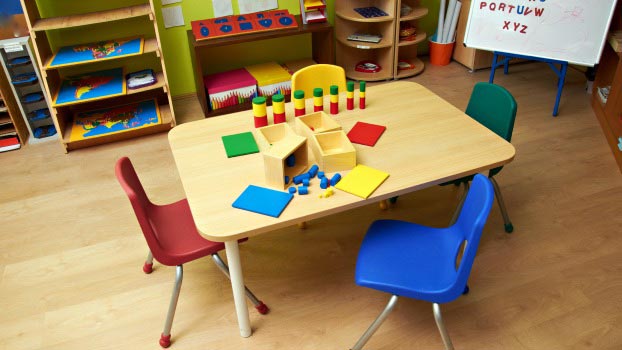

Preschool is one of the first places to introduce a classroom setting to early learners. Providing a space that is child-friendly allows children to make the most of their early education. The space should be bright and colorful inviting preschoolers in and keeping their attention. Furniture should be size appropriate and set up in a way that maximizes space. This will enhance physical and mental development by permitting them to move about freely to explore their environment. Designate different spaces for specific uses, such as a reading nook or quiet corner, a dramatic play area, and perhaps a craft center.
The best furniture for your preschool classroom needs to be both functional and safe. When considering the design of your learning center, tables and chairs are at the top of the list. They should be made for preschoolers in both size and design. They should have no harmful features (such as sharp edges or rough surfaces), and be vibrant and attractive.
Tables come in a variety of shapes, sizes and shades. Rather than keeping things uniform, supply the room with a mix of different tables to keep it interesting for the children. Chairs are also available in a rainbow of colors and styles to provide a stimulating atmosphere. They can be purchased as individual seats, beach sets, or stackable chairs.
Storage solutions must also be considered when furnishing your preschool classroom. Having a place for everything and keeping everything in its place is an important life skill for children to learn. Lockers by the entryway are a great idea for keeping hats, jackets, and personal items while in the schoolroom. Having an individual place for each child’s belongings creates a feeling of independence for early learners. Bookcases, shelves and bins are also necessary for providing a home for the many different learning tools like books, CDs, DVDs, craft supplies and more. When purchasing these different items, make sure that they are child friendly. Bookcases should be stable as to not tip over if climbed and they should always be securely anchored to the wall. Storage bins should also be user friendly by being easy to carry and access.
Finish off your preschool classroom with room dividers and area rugs. Creating different spaces within one big room allows for more learning opportunities. Panels, gates, or portable partitions are good ideas to offer designated spaces. While separating areas keep in mind that the whole room still needs to be visible with no obstructions for the teacher. The boundaries are in place to help children learn where what actions are appropriate, for example, craft tables are for crafts and reading nooks are for quiet time. Without using physical dividers, area rugs can also define a specific area that’s meant for a certain activity. Chosen carpets should be soft and colorful, maybe with numbers or the alphabet to help with learning.
Creating an environment that welcomes young learners and stimulates growth can be done through the selection of furnishings and the design of the classroom. Making preschoolers feel comfortable while providing a safe and healthy atmosphere is just the beginning of a lifetime of education.
Tell Us: What are your best tips for choosing furniture for the Early Childhood classroom?